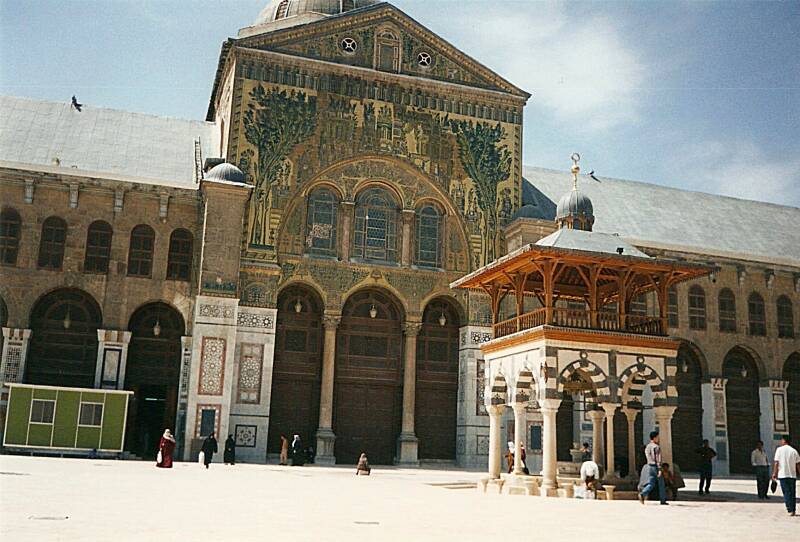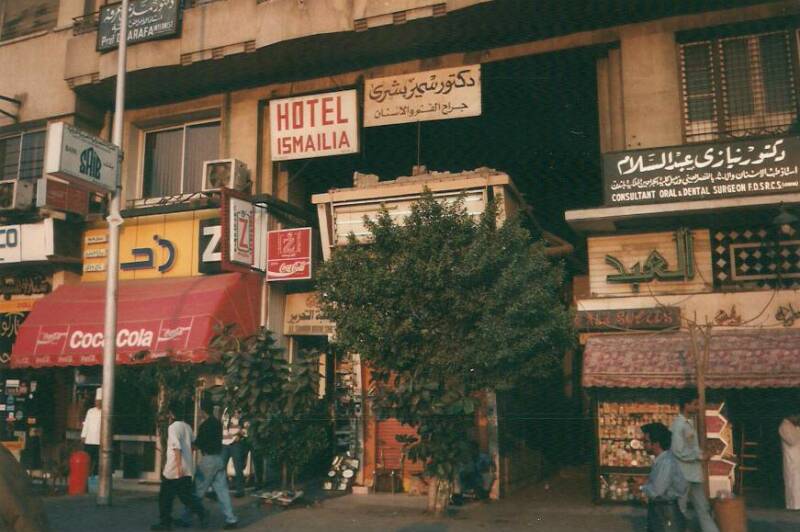
Abbāsid Water Storage Jars
The Abbāsid Caliphate
The Abbāsid Caliphate was the third
major Caliphate to succeed the prophet Muhammad after
his establishment of Islam in 622 CE
and his death in 632.
There was the Rāshidun Caliphate of 632–661,
the Umayyad Caliphate of 661–750,
and then the Abbāsid Caliphate
lasted from 750 to 1258 CE.
An Abbāsid Caliph founded the city of
Baghdad in 762 CE,
on the Tigris river near
the site of the ancient Babylonian capital of Babylon.
Baghdad under the Abbāsids became a center of
science, culture, art, and education during what came to be
called the Golden Age of Islam.
The art and technology included some nice
water storage vessels
that we'll examine further down this page.
Or jump ahead
if you're anxious for pictures.
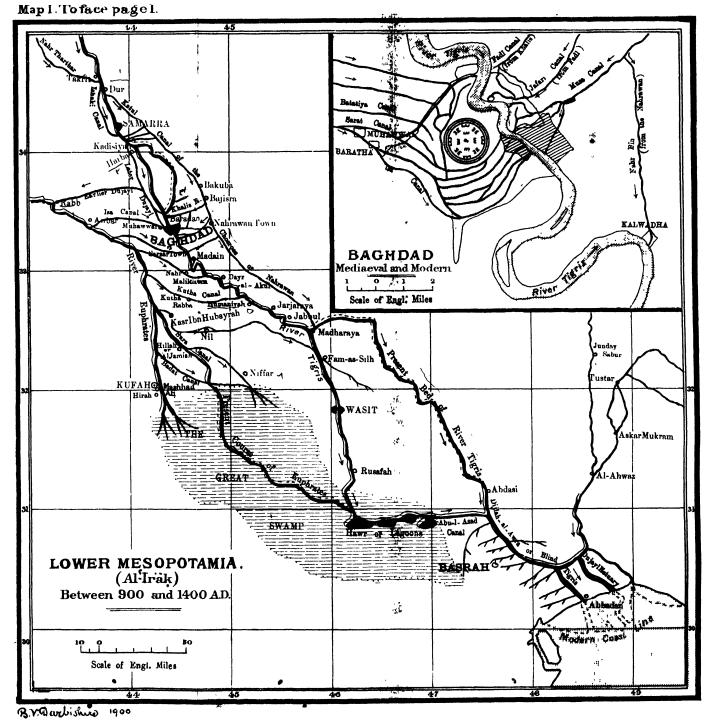
Lower Mesopotamia or al-'Irak in 900–1400 CE, from Baghdad During the Abbāsid Caliphate.
The ruling Caliph is considered to be a political and religious successor to Muhammad, and thus qualified to lead the Ummah, the entire Muslim world. Disagreements over just who is qualified to be the Caliph have led to wars and schisms. And meanwhile, secular dynasties also arose, fought, merged, collapsed, and otherwise kept things complicated.
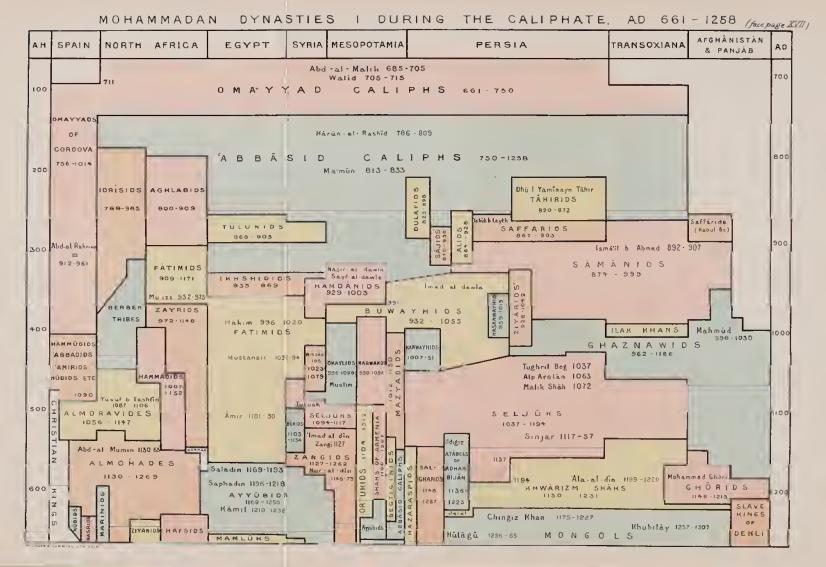
Muslim dynasties through space and time, from The Mohammedan Dynasties: Chronological and genealogical tables with historic introductions.
The Rāshidun Caliphate was ruled by the first four Caliphs to succeed Muhammad after his death in 632 CE. His childhood friend Abū Bakr was elected as the first successor Caliph, and began the rapid expansion of Islam.
Umar, the second Caliph, was assassinated in 644 by a Persian slave for reasons that are unclear, but probably related to the recent Muslim conquest of Persia.
Uthman, the third Caliph, was widely disliked because of his nepotism and weakness. He was seriously disliked. Rebel leaders sent groups of about 1,000 men from each of Egypt, Kufa, and Basra, instructing them to assassinate Uthman and overthrow his government. They accomplished that in 656.
Ali was the fourth Caliph, stuck with presiding over the First Fitna, a civil war caused by a desire for revenge for Uthman's assassination, dispute over Ali's rightful position as Caliph, and opposition to arbitration imposed after some earlier battles. Aisha, Muhammad's third and youngest wife, joined two other prominent leaders of the anti-Ali opposition.
VisitingDamascus
Ali was assassinated in 661, and his son Hasan ibn Ali briefly assumed the position of Caliph. Mu'awiya, who had become governor of Syria, had opposed Ali's selection as Caliph. Mu'awiya forced Hasan to sign a peace treaty, Hasan retired from public life, and Mu'awiya took over. The Umayyad Caliphate was founded in 661 CE with Mu'awiya as its first Caliph, based in Damascus.
The Rashidun Caliphate had been replaced. Hasan eventually died, either of a long-term illness or from being poisoned by M'awiya.
This was the branching point for the first major schism of Islam. Shī'a Muslims believe that Ali was the legitimate Caliph, appointed by Muhammad to be his successor, but delayed from taking office until Umar and Uthman held office and were assassinated in turn. Sunni Muslims believe that Abū Bakr was the first legitimate Caliph.
The Umayyad Mosque, seen above, is the main mosque in Damascus. It was completed in 715 CE under the Umayyad Caliph al-Walid I. Both Muslim and Christian tradition says that it is the true burial place of John the Baptist's head. Muslim tradition says that this is where Jesus will return before the End of Days.
The Abbāsid Caliphate later added structures including the Dome of the Treasury, seen below.
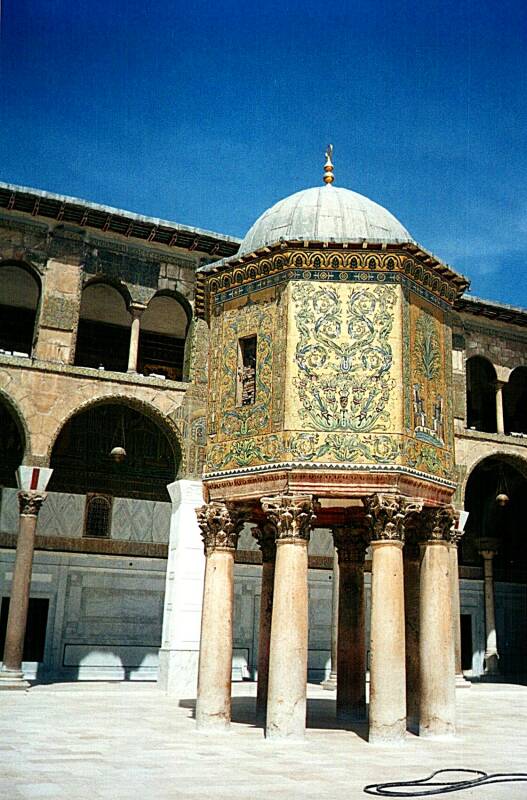
The Dome of the Treasury in the courtyard of the Umayyed Mosque in central Damascus, a picture from my visits in 1996 and 1997.
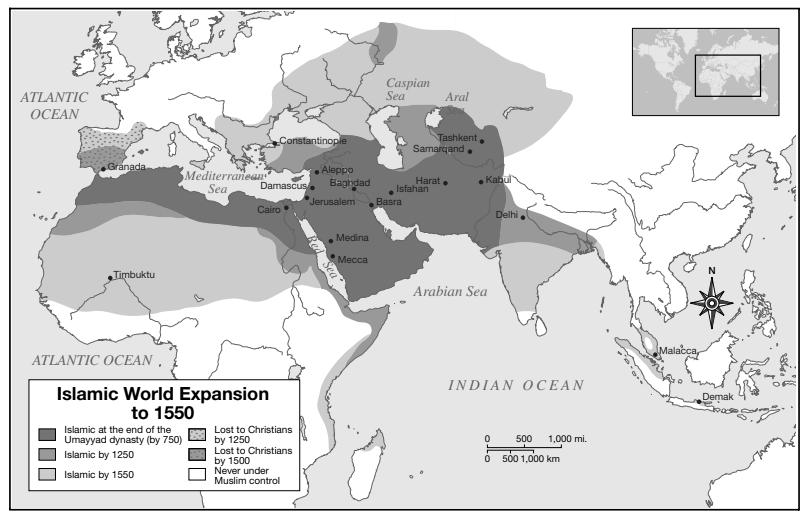
Expansion of the Islamic world, from Encyclopedia of Islam and the Muslim World, volume 2, page 243. The darkest grey, extending from the Atlantic coast of Morocco almost to Delhi, shows the extent of the Umayyad dynasty's control in 750 CE.
Trouble arose almost 90 years into the Umayyad Caliphate. A dynasty descended from al-Abbās ibn Abd al-Muṭṭalib, one of the youngest uncles of Muhammad, said that they were the true successors of Muhammad because they were more closely related to him than the Umayyads were.
Open revolt began in 747. Almost 10,000 men were in the opposition force when hostilities began in Merv. The leader Abu al'Abbas as-Saffah defeated the Umayyads in 750, and was then proclaimed the first Caliph of the Abbāsid Caliphate. Marwan, the last Umayyad Caliph, fled to Egypt and was killed there.
Abu al-Mansur took office in 754 as the second Abbāsid Caliph. Al-Mansur was the real founder of the Abbāsid Caliphate.
As an Abbāsid Caliph he was a "defender of the faith", watching for and shutting down any heresies or other threats. However, he had been impressed with hadiths such as:
In one of his most memorable sayings on the subject, Prophet Muhammad affirmed that "the ink of the scholar is more holy than the blood of the martyr." He taught Muslims that ignorance was humanity's greatest poverty, that a mind without education is like a brave man without arms, and that knowledge brings people — irrespective of gender, age, race or religion — into the highest rank of human accomplishment.
Another hadith quotes Muhammad as having said: "Seeking knowledge is obligatory upon every Muslim."
One of al-Mansur's first decisions was to found a new city on the banks of the Tigris river near the site where the ancient Babylonian capital of Babylon had once stood. He named the city Madinat al-Salam, "City of Peace", but everyone called it the "Round City". It became the home of the Golden Age of Islam.
Al-Mansur immediately established the House of Wisdom in his new city. It was later called the Grand Library of Baghdad.
Scholars in what came to be called Baghdad translated works from antiquity that otherwise would have been lost. They collected scientific works written in Sanskrit, Greek, Middle Persian, and Syriac into Syriac and Arabic. Some of them were then translated into other languages including Hebrew and Latin.
Hippocrates, the Asclepion Medical School, and its PlumbingGreek medicine was preserved by this translation into Arabic and document preservation. Eventually, much of it was translated into Latin and thus available to would-be physicians in western Europe.
The Caliphs were Arabs, but they also welcomed Persian scientists, mathematicians, physicians, philosophers, metaphysicians and epistemologists, musicians, and poets and other writers,
They made many significant advances in astronomy, biology, chemistry, pharmacology, medicine, optics, and engineering.
The majority of star names are Arabic. The list is based on Ptolomy's 2nd century CE list of the positions and brightnesses of 1,025 stars. A copy of that list made its way to the House of Wisdom, and was translated into Arabic. It was one of the books that was translated into Latin, with copies making their ways to western Europe.
Suwar al-Kawakib al-ThabitahBook of Fixed Stars, by al-Sufi
Arab and Persian astronomers wrote their own astronomy texts. Abd al-Rahman al-Sufi wrote the Book of Fixed Stars, attempting to merge the Arab translation of Ptolomy's book with lists of Bedouin and other indigenous Arabic names for stars. It added another 132 stars to Ptolomy's original 1,025. It also improved on the magnitude estimation method and added the color of each star.
Many chemistry terms, starting with chemistry itself, are Arabic. Also al-kohl or "alcohol", al-qalā or "alkali", an-nāl or "aniline" plus "polyaniline" etc, and so on through the alphabet.
Then the Mongols arrived.
Hulagu Khan led his Mongol horde to Baghdad in 1258 to siege it and then destroy it. That was the end of the Abbāsid Caliphate and the Golden Age of Islam.
Abbāsid Water Storage Jars
Let's get to the water containers! These are in the Metropolitan Museum of Art in New York.
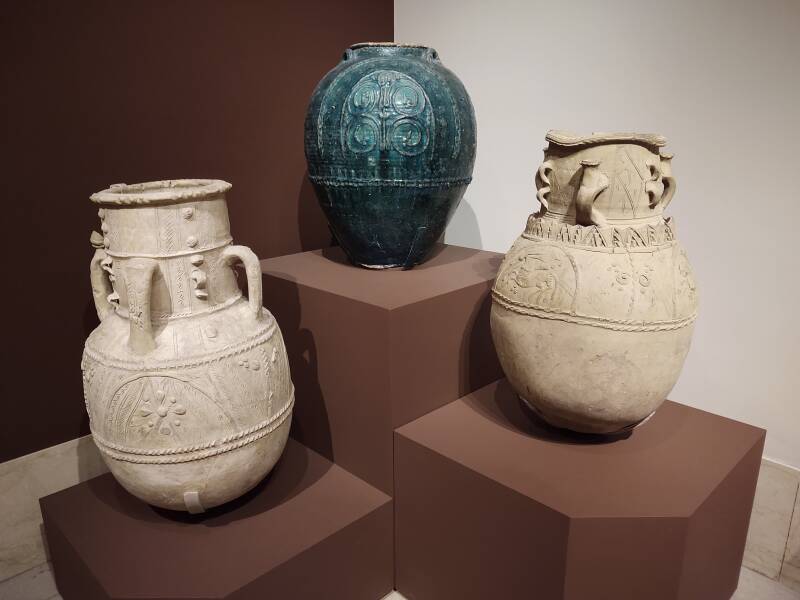
The green-glazed storage jar is attributed to Iran or Iraq. dated to the 7th–9th century CE, from the Umayyad or Abbāsid period. It's decorated with stylized vine designs.
This type of jar with a glazed surface circulated along trade routes across the Indian Ocean and the seas around China and Japan. These jars stored and transported grains, oils, syrups, and other bulk goods. Their designs led to a global visual culture referencing and connected to the early Islamic territories.
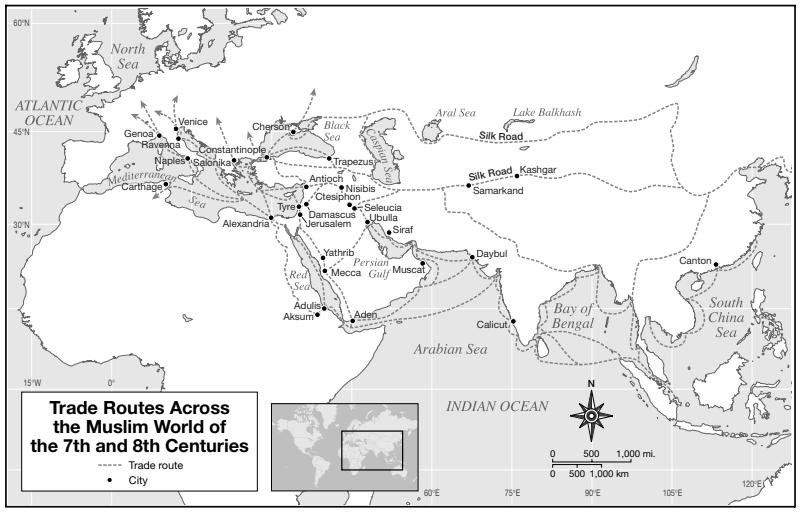
Trade routes of the 7th and 8th centuries CE, from Encyclopedia of Islam and the Muslim World, volume 2, page 509.
The two unglazed ones are for cool water. They date from the 8th–10th century CE during the Abbāsid period.
The one with floral designs within arches was found 1931 in Iraq, near Ctesiphon, today's al-Mada'in. That was the Sasanian capital that became an early Islamic metropolis.
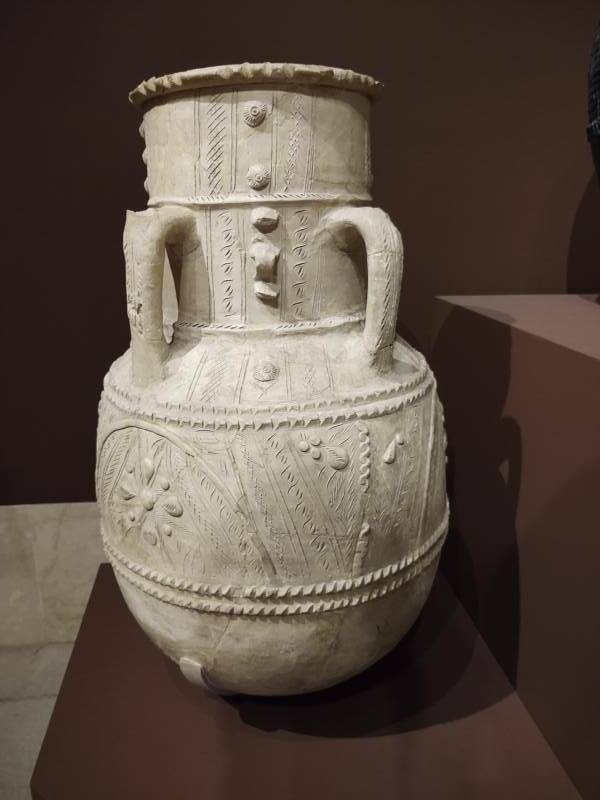
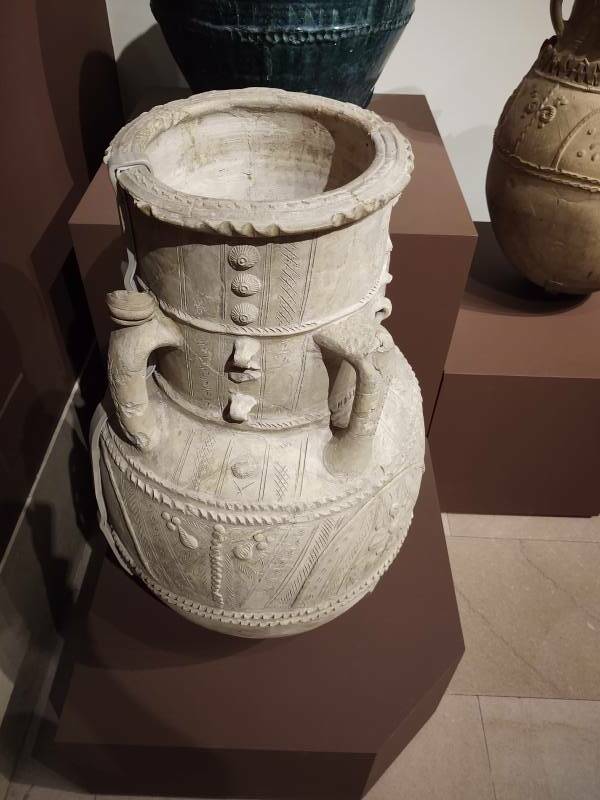
The other with bejeweled lion, hare, and deer is attributed to Iraq. The portrayals of living beings make the decoration an earlier, pre-Islamic theme from the Late Antique Sasanian and Byzantine periods.
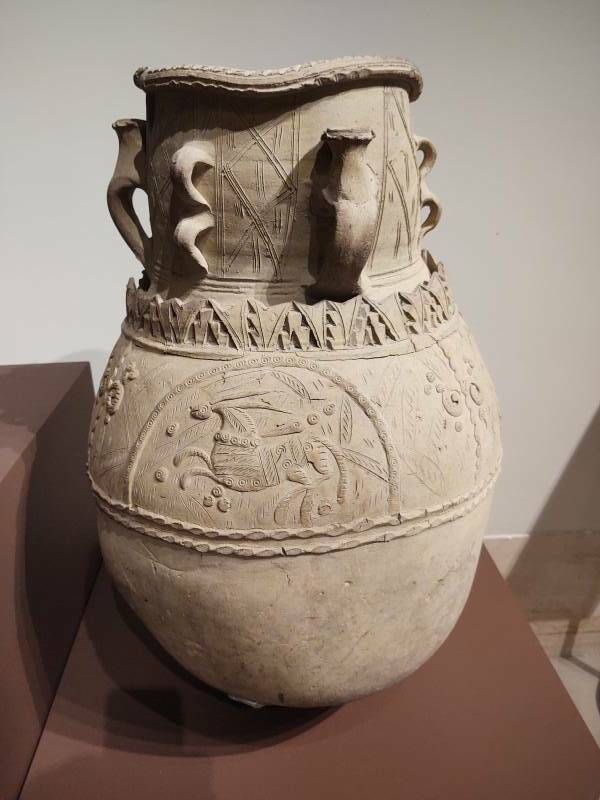
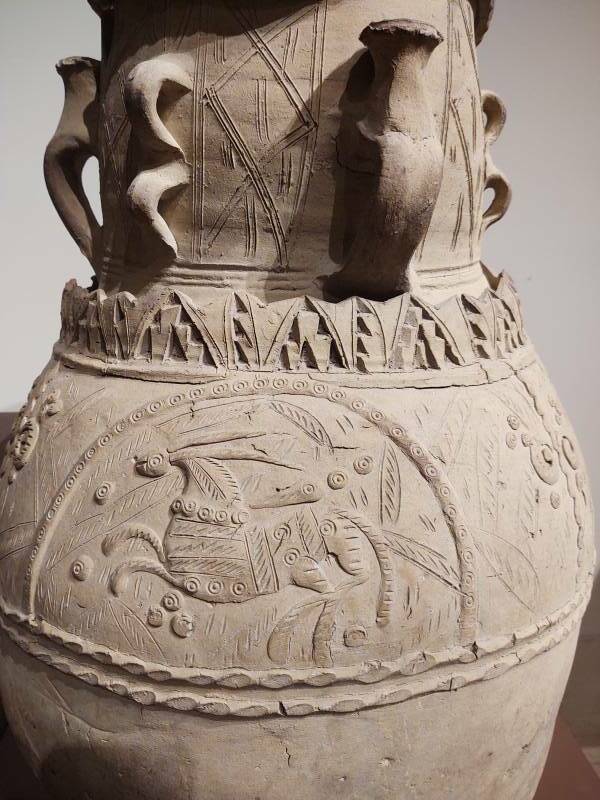
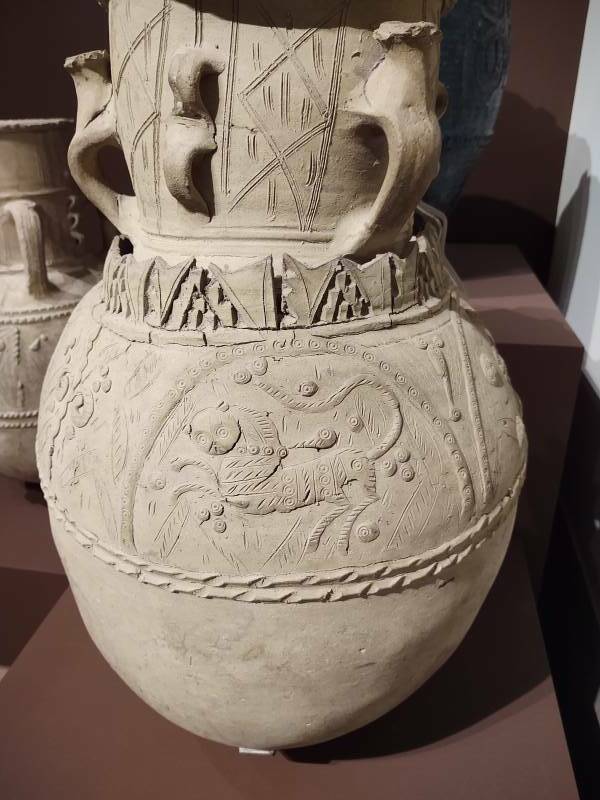
The unglazed jars were used to store and cool drinking water and other beverages. They were large enough for impurities to sink to the bottom, so that what you scoop out of the top with a dipper is clean.
The unglazed surfaces allowed for transpiration and evaporation. Moisture could slowly pass through the ceramic material, evaporating from the exterior to cool the jar and its contents.
The placard says:
Recipes of the period describe a wide variety of drinks—often flavored with floral extracts, musk, and other precious ingredients—meant to be served cold and kept in large containers (habbs in Arabic).
VisitingCairo
Unglazed jars like these are still used. Or at least they were when I was in Egypt in 1997.
I stayed at the Hotel Ismailia. A bed in a shared room cost E£ 20, equivalent to US$ 5.90. Twenty-five years later (!!) it was still in operation as a backpackers' hotel. The price had climbed, understandably, to US$ 16 per night. It's in one of the buildings with eight to ten stories on the perimeter of Tahrir Square.
Guesthouses at Booking.comThe bottom two or three floors of these buildings are filled with shops, small restaurants, tea shops, and medical and dental offices. Budget hotels are in the top one or two floors. The floors in between are filled with apartments.
In the evening I would go to a small tea shop down on the ground floor. They would regularly boil kettles of water to make more tea. For a cool drink, they would use a dipper to fill a cup with water from a large damp clay jar, similar in size and shape to the Abbāsid ones seen above. But quite recent, and completely plain.
The Fall of the Abbāsid Caliphate
The transpiration-cooled jar design has lived on, but the Abbāsid Caliphate came to an end.
As described in The Mohammedan Dynasties, pages 3–4:
The 'Abbāsid Caliphate at Baghdad was exterminated by the Mongol Hulagu in 1258 [CE] (656 [AH]). A line of their descendants, the Abbāsid Caliphs of Egypt, held a shadowy spiritual dignity at Cairo, until the last of the house was carried to Constantinople by the Ottoman Sultan SalĨm I, after the conquest of Egypt in 1517, and surrendered his title of Caliph to the conqueror.
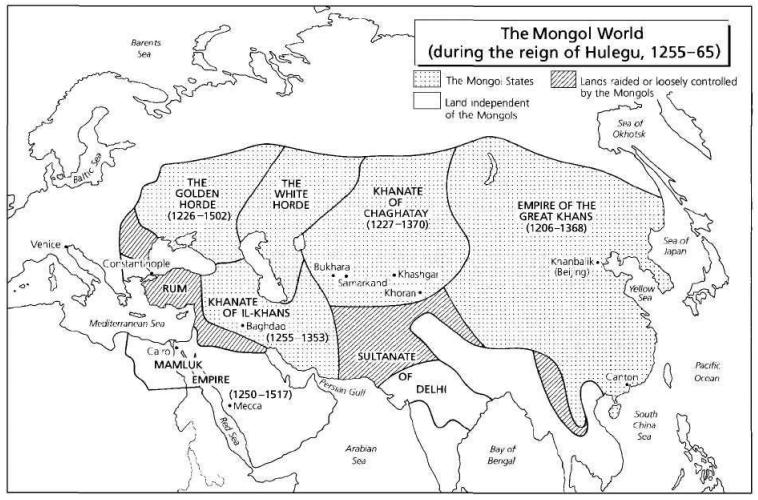
Mongol world during the reign of Hulegu, 1255–1265, from Islam: A Short History, page 99.
The Ottoman Empire grew out of a 14th century Turkish principality led by Osman I. Within a century, the Byzantine Empire was almost gone. It still held Constantinople, but the frontiers of Ottoman territory were short distances to the west and east.
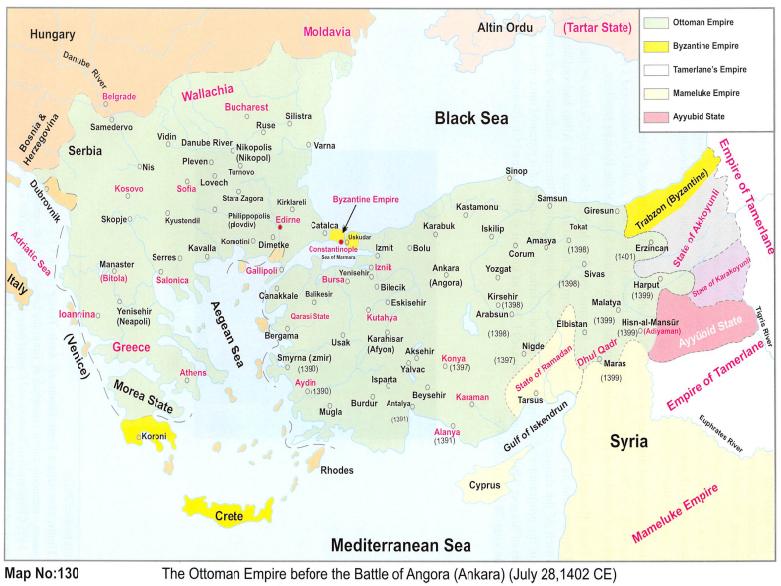
The Ottoman Empire in 1402 CE, from Atlas of the Islamic Conquests.
As described above, the army of the Ottoman Sultan Selim I defeated the Mamluk Sultanate of Egypt in 1517 and brought al-Mutawakkil II, the last Caliph of Cairo, to Constantinople as a prisoner.
The official story, which is a later invention, is that al-Mutawakkil formally surrendered the title of Caliph along with its sacred and legitimizing regalia, the sword and mantle of Muhammad.
Now the Ottoman Sultan was the Caliph of all Islam.
The Ottoman Empire grew, reaching its maximum extent in 1683.
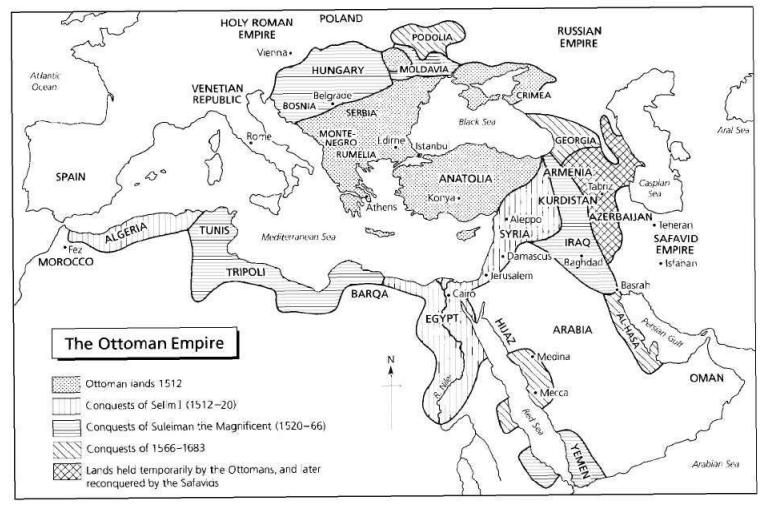
The Ottoman Empire in 1512–1683 CE, from Islam: A Short History, page 131.
The End of the Caliphate
The Ottoman Sultan had held the title of Caliph since 1517, and was generally recognized as such by other nations. But then the Ottoman Empire came to have reason to be called "The Sick Man of Europe" as the Sultans and the Empire declined through the 19th century.
A complicated series of conspiracies, unrest, minor revolutions, and other confusing details happened in rapid succession. Plus World War I, which set events in motion that would end the Empire within a years. Sultan Mehmed VI became the last Ottoman Sultan in July 1918. His first cousin Abdulmejid II was named Crown Prince.
The newly formed Turkish Grand National Assembly deposed the Sultan on 1 November 1922. Two and a half weeks later, on 19 November 1922, Abdulmejid II, Crown Prince of the House of Osmon until 18 days ago, was elected Caliph by the Turkish National Assemly. He was the only Caliph of the Republic of Turkey. Nominally, he was the 37th Head of the Ottoman Imperial House from the time his cousin was deposed until he died.
The Turkish Grand National Assembly declared Turkey to be a republic on 29 October 1923. Six months later, on 3 March 1924, the National Assembly abolished the Caliphate. Abdulmejid II was sent into exile with the rest of the Ottoman royal house.
He and his family went by car to a train station well west of Istanbul, where the authorities saw them onto the Simplon Express running northwest across Europe. They rode it to Switzerland. Once established there, Abdulmejid started making speeches about how the abolition of the Caliphate would bring chaos and extremism. The Turkish government pressured the Swiss government to make him stop giving speeches, and they did. Within seven months, he had moved on to Nice.
From there he later moved to Paris. He died there on 23 August 1944, the day Paris was liberated from German occupation.
The Fatimid Caliphate was an Ismaili Shia Caliphate, tracing their ancestry to Muhammad's daughter Fatima. It was established in 909 in Raqqada and then moved to Mahdia, both in today's Tunisia, In 973 the Fatimid Caliphate moved to Cairo. It continued there until 1171 when Saladin, who had become vizier in two year before, abolished it.
Saladin established the Ayyubid dynasty that same year, and re-established the Abbāsid Caliphate. Which, as we saw above, was diminished to a "shadowy spiritual dignity at Cairo". until its final dissolution in 1517.
Water storage devices from the Fatimid Caliphate are also exhibited in the Metropolitan Museum. There's a Fatimid large marble stand for a habb or water jar.
Those jars are made so porous that the water transpiring through the material partially evaporates, cooling the jar, but it runs down the sides of the jar and drips down into a basin in the stand. See the dedicated page for pictures and details!
Without a Caliph, there is no central authority to answer questions like "Does Islam allow the use of toilet paper?" As explained on the Islamic Toilet Rules page, a national figure may issue a fatwa on the topic, as happened in Turkey in 2015. But without a Caliph there is no universal rule for the Ummah, the entire Muslim world.
